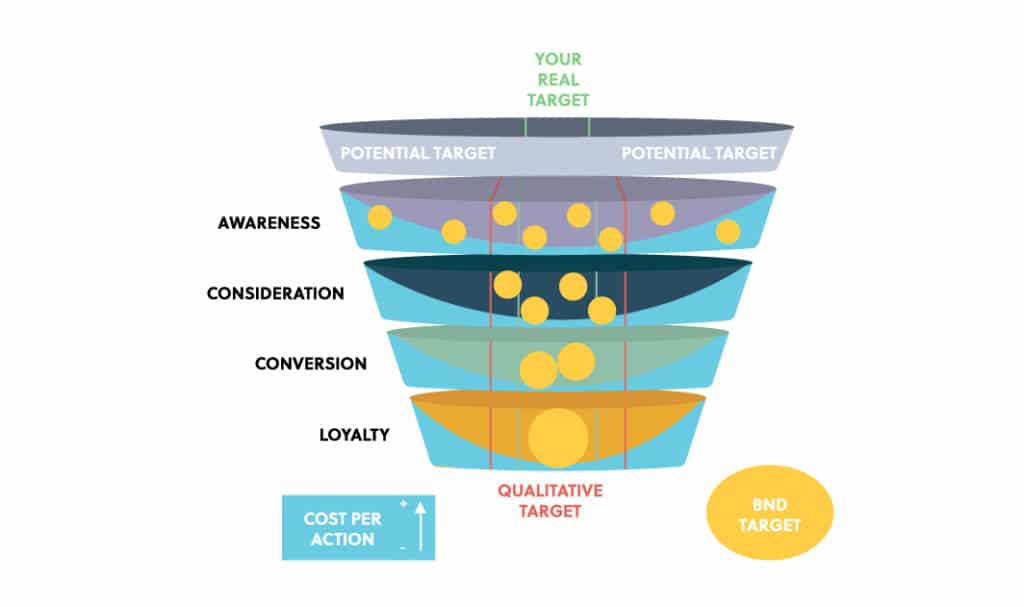You’re more than likely familiar with the sales funnel. You know, this figure that shows the different phases of your customer’s journey. Just as a reminder, the sales funnel includes 4 phases:
- The awareness phase
- The consideration phase
- The conversion phase
- The loyalty phase.
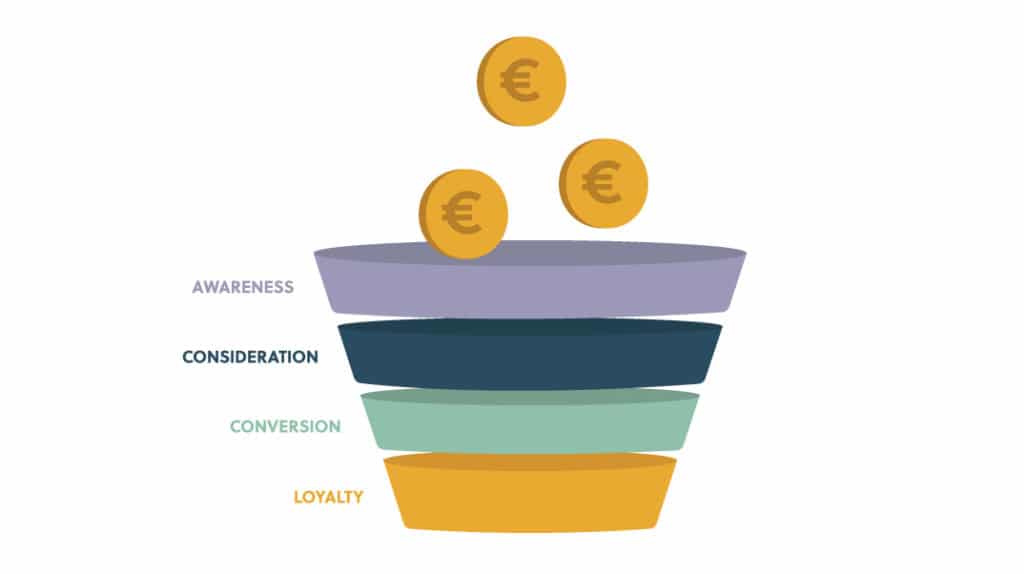
All of your marketing objectives are related to one of those stages, and at Brand New Day, we always base our social media strategies on this funnel. However, the use of the sales funnel requires some key knowledge to fully understand it.
Let’s start from the beginning: the sales funnel represents the potential target for your action. This seems obvious but, what is not said is that not the whole funnel is qualitative. Only a part of it represents a qualitative target (in red). Furthermore, only a part of this qualitative target is your real target, also known as your core audience (in green). With this in mind, we can go on and discover how we can exploit the full potential of this “concept”.
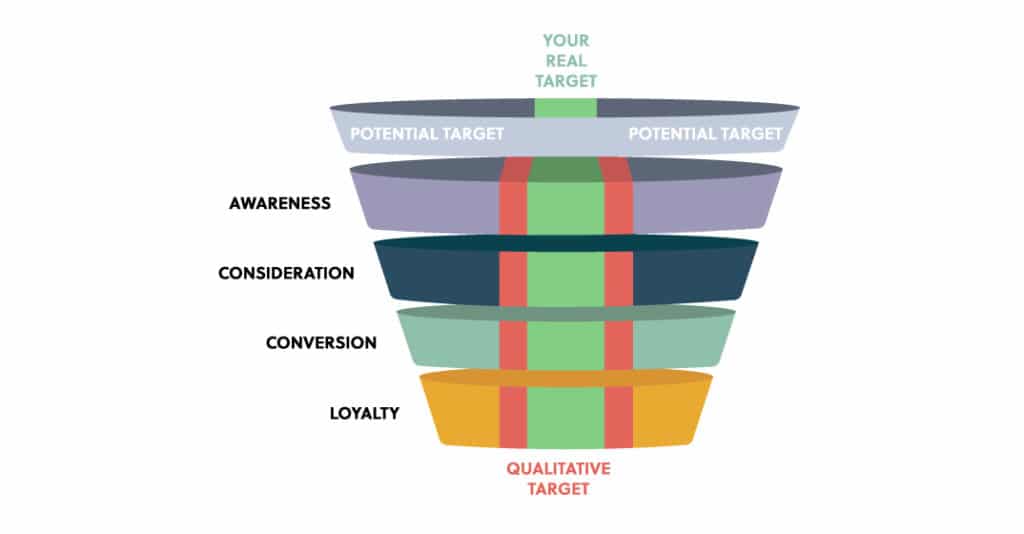
Right now, you should have many questions coming to your mind, such as:
- Reaching a whole phase allows me to get more results, right?
- How should I reach my qualitative or real target in this case?
- What is the point?! I generate results all along my campaign.
- And so on.
Those questions are totally relevant, but you missed two variables: the budget spent and the value of your results. Reaching a whole phase may cost a lot of money, and let’s get serious, not all of you can invest that much on (social) media. This leads us to the following subject: how can you target your core audience and optimize your budget?
On social media, you generally create your targeting by selecting some socio-demographics settings and INTERESTS. When you select those interests, you think of what your audience might like, do or want. The trick here is that the interests you select don’t always reflect what you think they are.
Let’s take the most-used interest: “luxury goods”. Do you know who are the people behind this interest? Do you really think the people with an interest for “luxury goods” are mostly potential buyers for your luxury product? At Brand New Day Agency, thanks to the SoPRISM social audience profiling solution we use internally, we do know that it’s not the case.
Besides the relevancy of the interests you use, you should take into account the size, or potential reach, of the targeting you have created. A bigger size means more reach, that’s true… but it also means that you will need more money to reach your whole audience, or at least a certain percentage of it.
Ok so once you’ve created the “perfect” targeting, what’s the next step? Launching the campaign of course and, if you did it well, generate results. Congratulations, but now that the first part of your campaign is finished and that everyone in your targeting knows your product, what are you going to do? You only ran a conversion phase, and now, you have a new product that no one has ever heard of? I think I forgot to mention something, that is obvious for us at BND, but that you may have forgotten: your campaign should work, like the sales funnel (remember it?), in different phases.
Let’s take an example: you want to sell a new product on the market. How should we get from the “no one knows me” to the “everyone buys and loves my product”? Simple! use the sales funnel’s steps. Use an awareness phase to create some visibility for your product, use a consideration phase to generate interests in your product and use a conversion phase to sell it hard.
Let’s get back to my previous question: what do you do when you’ve launched your first phase with the “perfect” targeting and that it generates results? Launching your second phase right away and then the third (and fourth) phase? Are you sure? Well, you shouldn’t! That is a common mistake for most advertisers on social media.
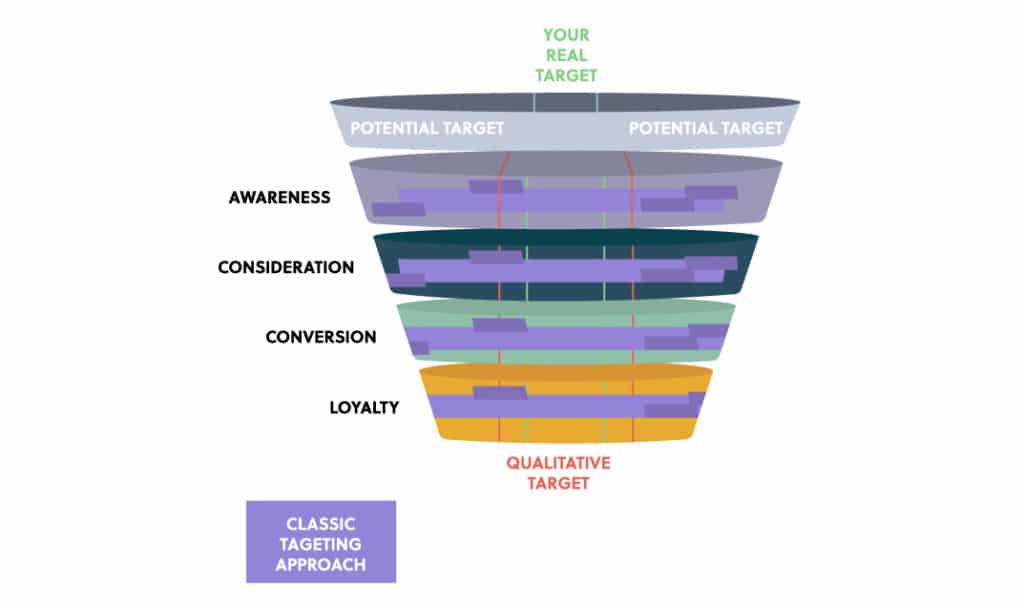
Most campaigns are launched with only one or two targeting used all along the campaign (look at the previous illustration) . The problem, as you can see, is that the targeting often includes people who are not really interested in your product or that may cost a lot to like/buy/recommend your product (see below).
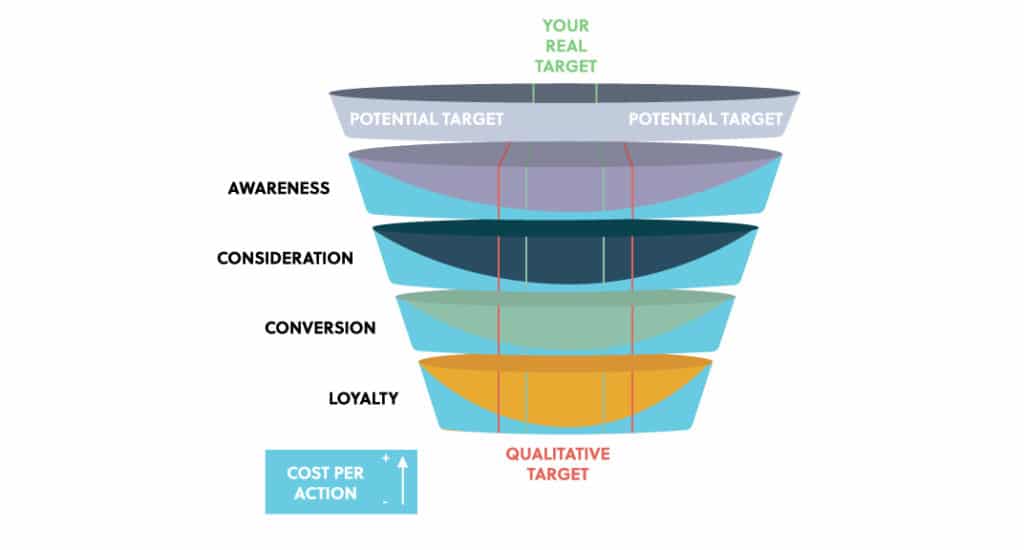
Earlier, I spoke about the value of your results, but I didn’t really explain what it means. Let’s take the example of a conversion phase. The goal here is to sell, right? And as long as you sell, then everything is good, right? But what if you can sell the same amount for only half of the price? I assume that you would love the idea. Imagine that the more you get to the center of the funnel, the less you will pay for your target to take an action. The exercise here is to know who is at the center and how to reach more and more of them all along your campaign… Which is impossible with only one or two broad audiences.
At Brand New Day, we work with multiple audiences in different combinations in order to avoid overlap and to be sure that we reach a small amount of every group at first. Yes, it may seem crazy and the fact that we already had a campaign with more than 200 different combinations will just confirm that! After that, at each phase, we select only the audiences that generate the best results, so we can capitalize on those. This way, we generate more actions for less money and, sometimes, even broaden our reach at each phase.
